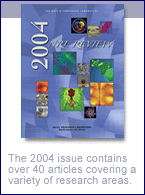| AWARDS & RECOGNITIONS |
| TIME LINE |
| SYSTEMS |
| ROCKETS |
| SOLAR & LUNAR STUDIES |
| ASTRONOMY |
| OCEAN & ENVIRONMENT |
| MATERIALS |
| DIRECTORATES & DIVISIONS |
| NANOSCIENCE INSTITUTE |
| NRL REVIEW |
| FUTURE NAVAL CAPABILITIES |
| NRL RESEARCH LIBRARY |
| FACILITIES |
| PROGRAM SPONSORS |
| / NRL / Accomplishments / Materials | |||||||
| Materials Science | |||||||
| Awards & Recognitions Time Line Systems Rockets Solar & Lunar Studies Astronomy Ocean & Environment Materials Blood Surrogate Permanent Magnet Purple-K-Powder Aqueous Film Foam Oil Spill Control Seamarker Mosquito Control Atmosphere Monitoring Hydrazine Indicator Fracture Mechanics Hi Temp Superconductors Microassay on a Card Vapor Sensor Portable X-ray Explosive Detectors Fiber-Optic Sensors Cyclotron Accelerator Pilojector |
Blood Surrogate - In 1985, NRL developed synthetic red cells as a potential blood surrogate, which is storable many times longer than regular blood and is targeted for use in combat casualty care or domestic emergency trauma care. Permanent Magnet - NRL researchers were the first to study the magnetic properties of rare earth-iron-boron alloys, which showed promise for permanent magnet use. NRL scientists hold the fundamental U.S. patents on these materials.
Aqueous Film Foam - In the early 1960s, NRL fire suppression research led to one of the most far-reaching benefits to worldwide aviation safety – the development of aqueous film-forming foam for use in potentially catastrophic fuel fires. Oil Spill Control - A 1970 NRL-developed method for oil spill containment is used today for Naval fleet and facility pollution control and recovery programs for harbors and bays. Seamarker - The early film-based NRL seamarkers helped save the lives of more than 150 people during World War II. Mosquito Control - While testing surface films for use in controlling oil spills, NRL researchers developed a non-toxic form of mosquito control. Atmosphere Monitoring - NRL developed the Central Atmosphere Monitor System, which allowed submarine crews, for the first time, to reliably monitor the air aboard their boats. Hydrazine Indicator - NRL developed a detector for fuel vapor concentrations that protects against explosions that might occur because of residual fuel left in the space shuttle’s tank when it lands. Fracture Mechanics - NRL developed the scientific principles for understanding applied stresses and cracks or other defects in metallic materials, beginning a new era in the development of fracture mechanics. Hi Temp Superconductors - NRL began its superconductivity research in 1948, and in March 1987, NRL isolated, identified, and established processing procedures for the first superconducting material with a transition temperature over 90K. The Navy's potential uses for superconductors include motors for ship propulsion, magnetometers for underwater ocean surveillance, detectors of electromagnetic radiation, and space systems. Microassay on a Card - NRL developed the Microassay on a Card (MAC), which is a portable, handheld immunoassay – about the size of a credit card – that can detect a wide variety of substances in the environment. Vapor Sensor - NRL’s surface acoustic wave sensor system was developed to detect and identify gasses, and is currently used to monitor hazardous chemical vapors, chemical warfare agents, potential fires, and environmental pollutants. Portable X-ray - NRL developed a lightweight, portable X-ray unit for medical imaging, triage in the field, nondestructive testing, threat detection, and surveillance in remote locations. Explosive Detectors - NRL’s explosive and contraband detector uses nuclear quadrupole resonance to detect nitrogenous explosives or narcotics carried in luggage, mail, small cargo or on a person. Fiber-Optic Sensors - NRL’s fiber-optic biosensor uses antibodies, lectins, and antibiotics on the surface of an optical fiber to detect environmental pollutants and hazardous chemical or biological materials. Cyclotron Accelerator - NRL’s Cyclotron Particle Accelerator produces high-energy beams to study radiation damage to reactor materials, neutron radiation therapy for cancer, production of radioisotopes, and general radiation research. Pilojector - In 1962, NRL developed a surgical technique for correcting intracranial aneurysms using an air gun, called a pilojector. This method replaced older methods and offered precise control of position, injection velocity, and penetration. |


|
||